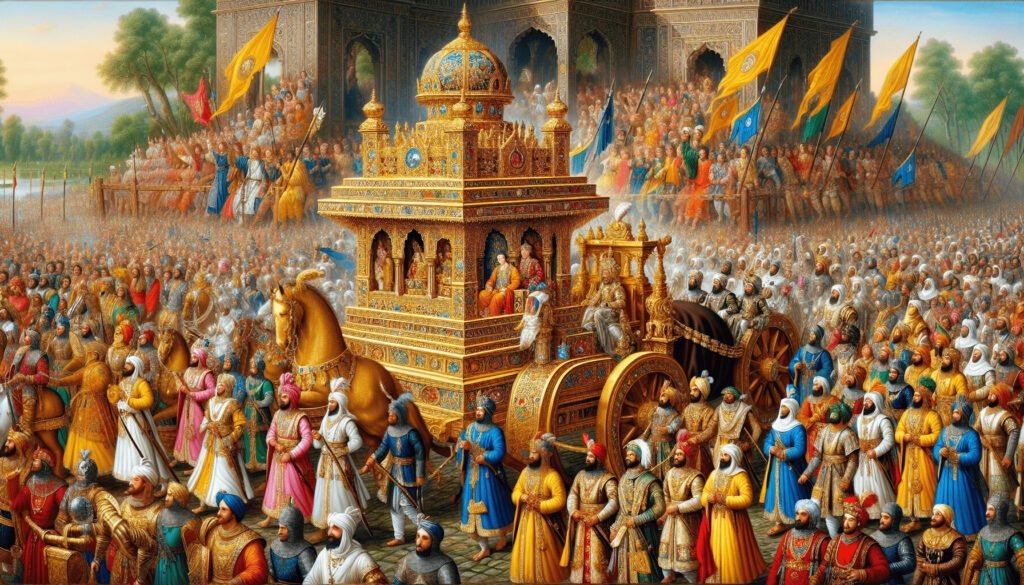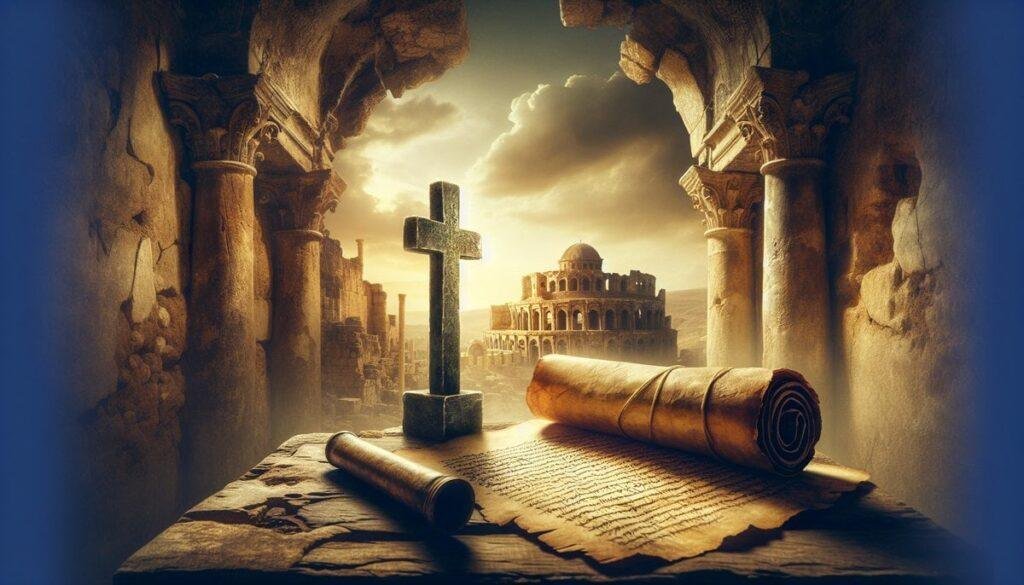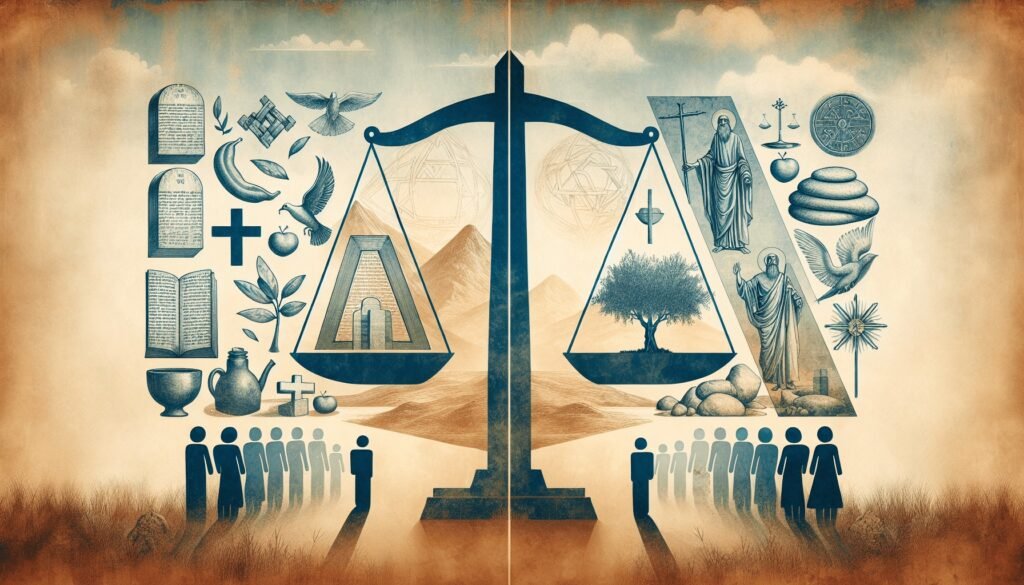What if you could trace the echoes of a moment when faith met triumph, right in the heart of a bustling city? Picture this: a king leading a grand procession, the thrumming of excitement in the air, vibrant banners waving against the azure sky, and at the center of it all, the awe-inspiring Ark of the Covenant. This scene isn’t just a historical anecdote; it’s steeped in layers of significance that have transcended millennia. So, let’s unravel the threads of this majestic narrative.
The Historical Context
To truly appreciate the grand procession tied to the Ark’s presence, it’s essential to understand the broader historical context. The Ark of the Covenant was not merely a physical object; it was a symbol of divine presence and protection for the Israelites. With its origins traced back to the Exodus from Egypt, the Ark served as a communication channel between God and His people.
The Ark of the Covenant: A Symbol of Divine Presence
The Ark was first constructed under Moses’ direction, per instructions detailed in Exodus 25:10-22. This magnificent chest made of acacia wood, overlaid with gold, housed the tablets of the Law, a jar of manna, and Aaron’s rod.
- Significance: The Ark held immense spiritual significance. It represented God’s promise and His continuous guidance.
- Location: Throughout the wandering years, it was carried through the desert, always leading the way for the people.
The Role of Kings in Ancient Israel
Kingship in ancient Israel was fundamentally intertwined with spirituality. When the Israelites called for a king, they were not merely seeking a political leader; they wanted a figure who could unite them spiritually and militarily.
- Saul’s Reign: The first king, Saul, struggled to maintain God’s favor. His reign serves as a cautionary tale about disobedience.
- David’s Ascendancy: With David, we see a leader who is deeply connected to the divine. The Ark becomes a pivotal point in his rule, particularly during his ascent to kingship.
The King’s Grand Procession
The event you’re eager to dissect is the day King David brought the Ark into Jerusalem. This was not a mere logistical operation; it represented a profound shift in the spiritual landscape of the nation.
A Celebration of Faith and Unity
Imagine the streets flooded with jubilant faces, people of all ages celebrating as the Ark drew near. David, donning an ephod, danced with reckless abandon, embodying the joy and reverence that such an occasion demanded.
- Music and Worship: The sound of joyous music filled the air, instilling a sense of collective enthusiasm. Instruments played, and the people sang hymns, the rhythm of faith unfurling like a banner in the wind.
- Public Participation: This wasn’t a solemn event restricted to the elite. It urged everyone—from the small child to the weary elder—to participate in the joy.
The Ark’s Journey to Jerusalem
The Ark’s journey was not without its challenges. As described in 2 Samuel 6, tragedy struck when Uzzah reached out to steady the Ark during its transportation. His death was a stark reminder of the sanctity of the Ark and the seriousness of divine presence.
- Uzzah’s Error: The act was deemed irreverent, showcasing that even well-meaning intentions must align with divine will.
- David’s Reflections: After this incident, David paused, reflecting on the gravity of the Ark’s power and presence, showcasing a king’s vulnerability when faced with the divine.

Archaeological Insights
Fast forward to today, there has been a plethora of archaeological findings that provide context to these biblical narratives. Some may think of archaeology as merely sifting through dirt, but it offers much more.
Recent Discoveries
Recent excavations in Jerusalem have unveiled structures that align with descriptions found in biblical texts.
| Discovery | Significance |
|---|---|
| The City of David | Provides geographical context |
| Ancient altars and worship sites | Insights into religious practices |
| Pottery fragments | Daily life of ancient Israelites |
- Significance of Findings: These discoveries validate many historical accounts, showing that the events described in scripture are not mere myths but rooted in reality.
The Temple Mount
The Temple Mount, considered one of the holiest sites in Jerusalem, is also intimately tied to the Ark’s narrative. After David, it was his son Solomon who built the temple that housed the Ark.
- Historical Connections: The Temple represents a culmination of David’s vision—a permanent home for divine presence.
- Cultural Relevance: This site has become a focal point for various faiths in modern society, illustrating how history shapes contemporary beliefs and practices.
The Theological Implications
The procession wasn’t merely about a king or an Ark. It delved into significant theological themes that resonate through the ages.
The Presence of God
The Ark’s presence symbolized God’s unbroken covenant with His people. When it moved into Jerusalem, it was not just a relocation; it was an affirmation that God dwelled with His people.
- Covenantal Relationship: This is a recurring theme in biblical literature, emphasizing that God’s presence among humanity is a profound act of love and mercy.
- Modern Reflections: Today, many seek that same connection in various forms—through community, worship, or personal conviction.
Kingship and Divinity
David’s act of bringing the Ark to Jerusalem transformed kingship from a purely political role to one under divine authority.
- Spiritual Leadership: David exemplified the notion that true leaders are those who guide their people in unity with God’s will.
- Lessons for Today: This raises critical questions for contemporary leaders: Are they attuned to the spiritual needs of their communities?

Cultural Significance Over Time
The implications of the King’s Grand Procession stretch far beyond the borders of ancient Israel, weaving into the culturally rich tapestry of the world.
Influence on Art and Literature
The Ark’s allure has inspired countless artists and writers over centuries. From classical sculptures to modern interpretations in literature.
- Artistic Representations: Paintings depicting the Ark, its journey, and the joy of David’s procession serve as a reminder of this historical moment.
- Literary Allusions: Authors have often referenced the Ark in discussions of morality, faith, and divine interaction with humanity.
Celebrations and Festivals
Similar grand processions can be seen in various cultures mirrored as acts of devotion.
- Modern Parallels: Today, many faith traditions celebrate processions that commemorate significant events in their religious histories.
- Unity in Diversity: These celebrations emphasize the universal longing for connection to the divine, echoing sentiments felt during David’s time.
Conclusion: Bridging Ancient and Modern
As we reflect on the King’s Grand Procession, you’ll find that these moments offer a tapestry woven with threads of faith, history, and profound significance.
- Legacy of the Ark: The Ark of the Covenant remains a powerful symbol of hope, unity, and divine presence.
- Personal Application: In your own life, how might you seek that divine connection? Consider the ways you can create your own “processions” of faith in everyday life.
In the grand scheme of human existence, this narrative serves not only as a glimpse into a historical moment but as guidance for pursuing profound connections with the divine. Whether through ceremonial acts, personal reflection, or community engagement, the legacy of the King’s Grand Procession invites you to revel in the joy found in faith and unity. The past informs the present, and through it all, the quest for spiritual significance continues, echoing in the hearts of people across the globe.


